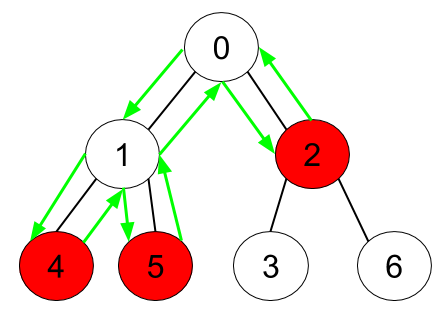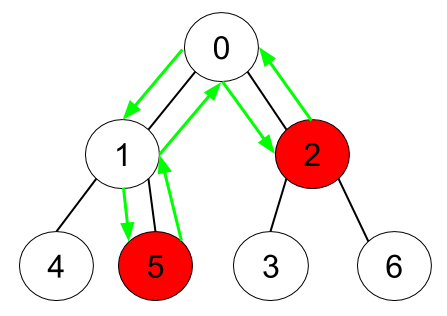1443. Minimum Time to Collect All Apples in a Tree
1443. Minimum Time to Collect All Apples in a Tree
Description
Given an undirected tree consisting of n vertices numbered from 0 to n-1, which has some apples in their vertices. You spend 1 second to walk over one edge of the tree. Return the minimum time in seconds you have to spend to collect all apples in the tree, starting at vertex 0 and coming back to this vertex.
The edges of the undirected tree are given in the array edges, where edges[i] = [a<sub>i</sub>, b<sub>i</sub>] means that exists an edge connecting the vertices a<sub>i</sub> and b<sub>i</sub>. Additionally, there is a boolean array hasApple, where hasApple[i] = true means that vertex i has an apple; otherwise, it does not have any apple.
Example 1:

1 | Input: n = 7, edges = [[0,1],[0,2],[1,4],[1,5],[2,3],[2,6]], hasApple = [false,false,true,false,true,true,false] |
Example 2:

1 | Input: n = 7, edges = [[0,1],[0,2],[1,4],[1,5],[2,3],[2,6]], hasApple = [false,false,true,false,false,true,false] |
Example 3:
1 | Input: n = 7, edges = [[0,1],[0,2],[1,4],[1,5],[2,3],[2,6]], hasApple = [false,false,false,false,false,false,false] |
Constraints:
1 <= n <= 10^5edges.length == n - 1edges[i].length == 2- 0 <= ai < bi <= n - 1
hasApple.length == n
Hints/Notes
- 2025/03/10 Q1
- tree dfs
- 0x3F’s solution
Solution
Language: C++
1 | class Solution { |